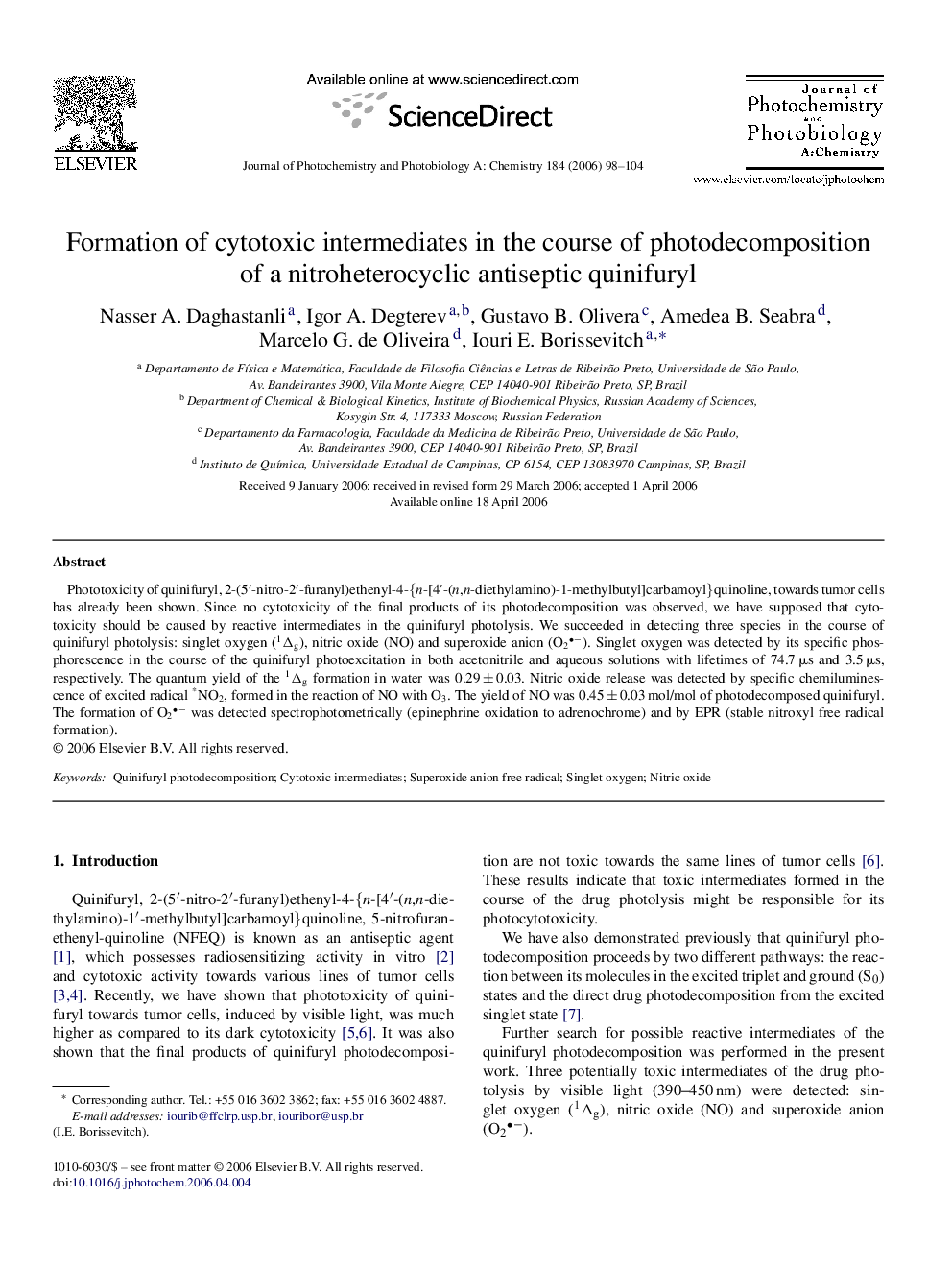| Article ID | Journal | Published Year | Pages | File Type |
|---|---|---|---|---|
| 28583 | Journal of Photochemistry and Photobiology A: Chemistry | 2006 | 7 Pages |
Phototoxicity of quinifuryl, 2-(5′-nitro-2′-furanyl)ethenyl-4-{n-[4′-(n,n-diethylamino)-1-methylbutyl]carbamoyl}quinoline, towards tumor cells has already been shown. Since no cytotoxicity of the final products of its photodecomposition was observed, we have supposed that cytotoxicity should be caused by reactive intermediates in the quinifuryl photolysis. We succeeded in detecting three species in the course of quinifuryl photolysis: singlet oxygen (1Δg), nitric oxide (NO) and superoxide anion (O2−). Singlet oxygen was detected by its specific phosphorescence in the course of the quinifuryl photoexcitation in both acetonitrile and aqueous solutions with lifetimes of 74.7 μs and 3.5 μs, respectively. The quantum yield of the 1Δg formation in water was 0.29 ± 0.03. Nitric oxide release was detected by specific chemiluminescence of excited radical *NO2, formed in the reaction of NO with O3. The yield of NO was 0.45 ± 0.03 mol/mol of photodecomposed quinifuryl. The formation of O2− was detected spectrophotometrically (epinephrine oxidation to adrenochrome) and by EPR (stable nitroxyl free radical formation).
